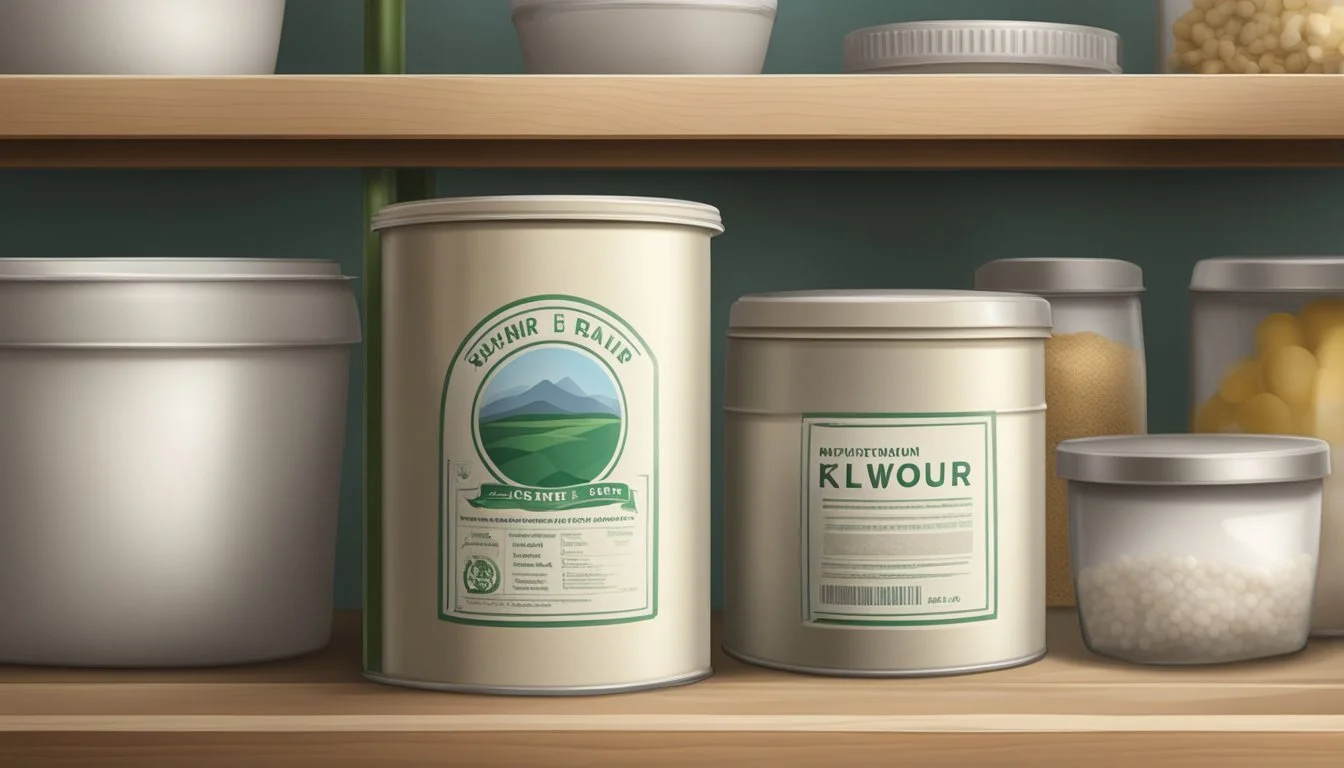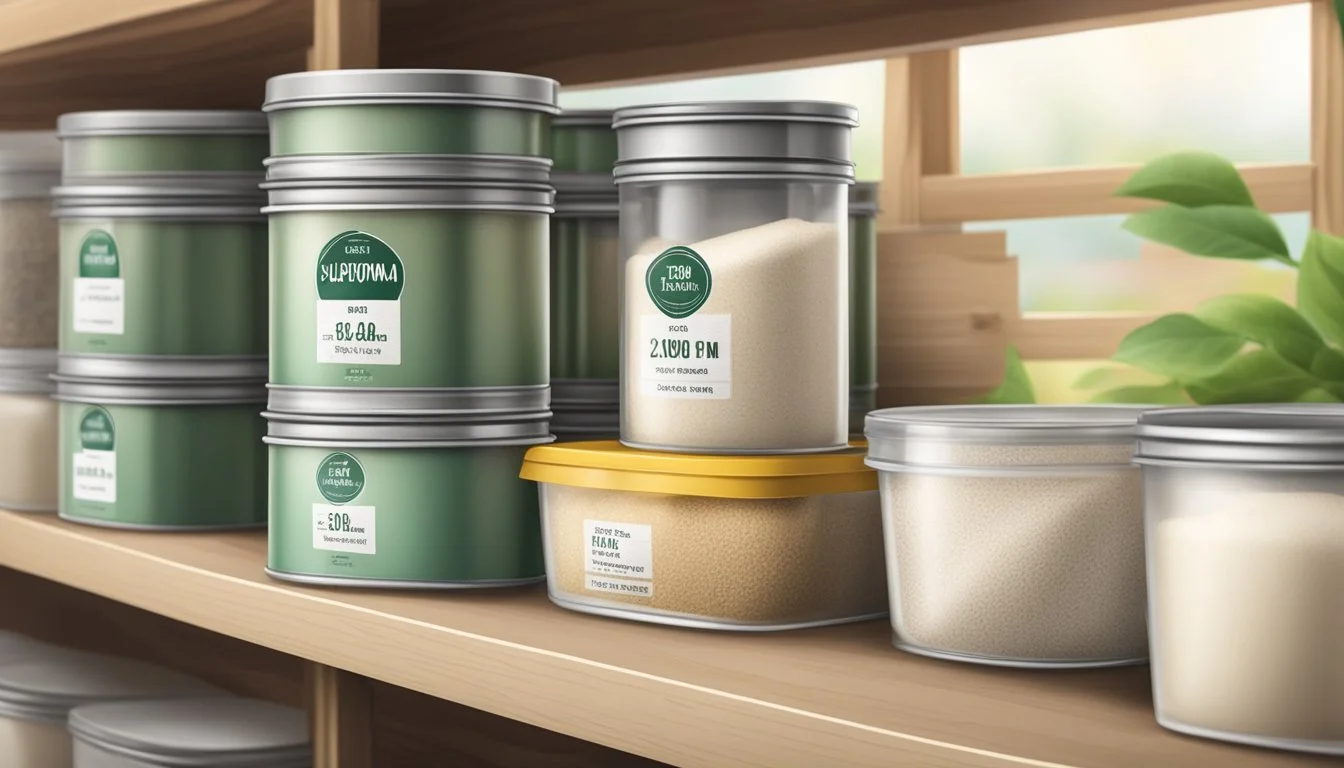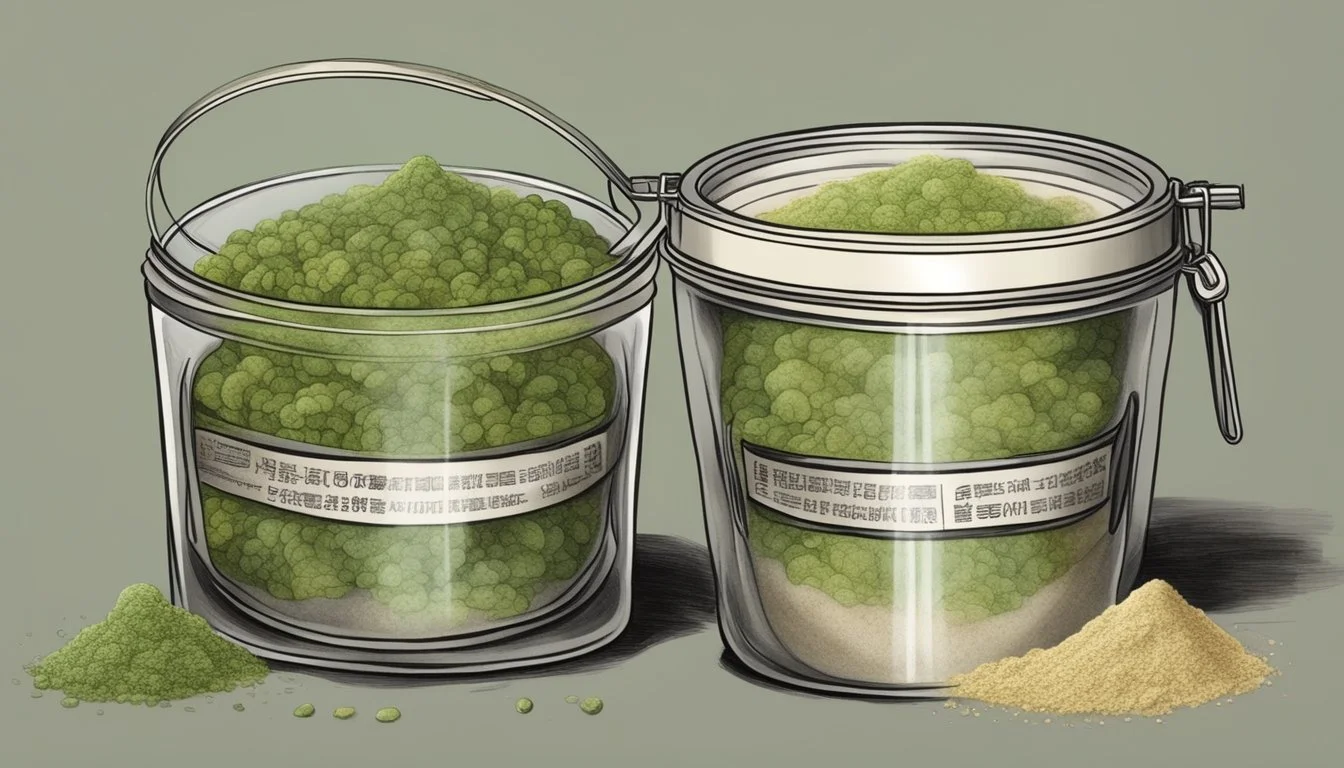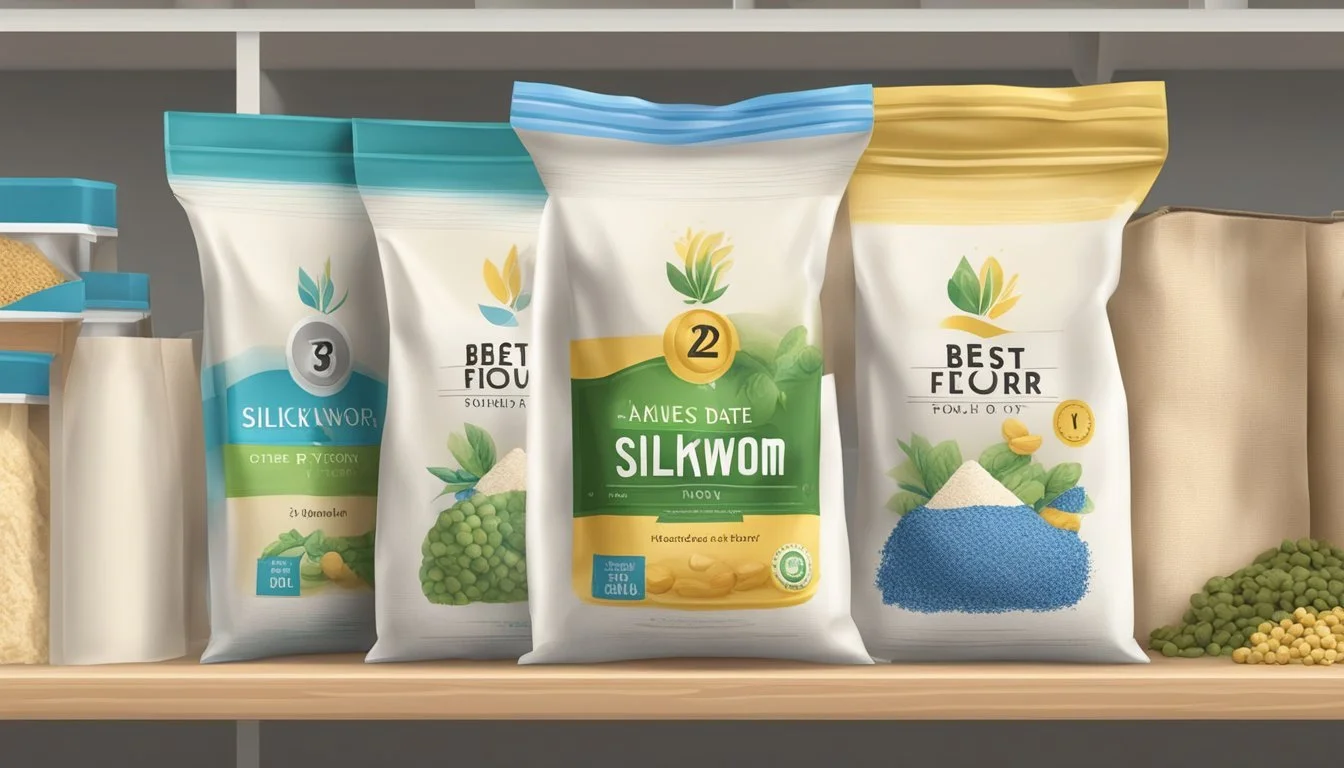How Long Does Silkworm Flour Last?
Understanding Shelf Life and Storage Tips
Silkworm flour, a less commonly known flour derivative, is gaining interest for its unique properties and potential health benefits. While traditional flours such as wheat or almond are staple ingredients in various culinary practices, silkworm flour is primarily utilized for its high protein content and as an alternative food source in some cultures. As with any flour, the shelf life of silkworm flour is contingent upon the storage conditions and the integrity of the product at the time of purchase.
The preservation of silkworm flour typically mirrors that of more traditional flours. It does not last indefinitely and is best used when fresh. Without an established expiration date specific to silkworm flour, the general guideline for flour shelf life ranges from three to eight months at room temperature. Factors such as humidity, temperature, and exposure to air can affect the degradation rate of the flour's quality.
When storing silkworm flour, it is essential to keep it in an airtight container to minimize exposure to moisture and pests. Storing it in a cool, dry place can extend its usability. For long-term storage, silkworm flour may be kept in the freezer, which can significantly increase its shelf life, preventing spoilage and maintaining its nutritional benefits. Consumers should always check for signs of spoilage, such as off odors or changes in texture, before using the flour in food preparation.
Understanding Silkworm Flour
In the realm of specialty flours, silkworm flour stands out due to its unique composition and nutritional profile, often used as a non-traditional protein source.
Silkworm Flour Properties
Silkworm flour is derived from the silkworm, Bombyx mori, primarily composed of protein and considered a non-traditional, yet sustainable source of nutrients. This type of flour is markedly different in use and storage from common varieties such as all-purpose flour, bread flour, and cake flour. Unlike nut flours like almond flour or coconut flour, which contain oils that shorten their shelf life, silkworm flour's shelf life is influenced by its protein content and storage conditions.
It does not fall into standard categories of flour like whole grain, gluten-free, or white flour. Instead, it's a niche product primarily used within certain dietary frameworks and for its alleged health benefits. Traditional grain-based flours such as whole-wheat flour, white flours, and others like self-rising flour, pastry flour, and even gluten-free flours typically provide carbohydrates as their main macronutrient. In contrast, silkworm flour offers a high protein content, making it a unique entry in the flour market.
The closest comparison within the flour spectrum might be whole grain flours in terms of nutrient density, though silkworm flour remains distinct due to its animal-derived nature. Its inclusion in recipes is dependent not only on nutritional aspirations but also on its specific culinary properties.
King Arthur Baking Company, as an industry authority, generally recommends storing flours in an airtight container in a cool, dry place, and these guidelines would likely extend to specialty flours like silkworm flour to maintain freshness. However, specifics on the shelf life of silkworm flour are not commonly detailed by such established baking brands, and consumers typically need to rely on the manufacturer's recommendations.
Shelf Life Determinants
The shelf life of silkworm flour, like other flours, depends primarily on storage conditions and the intrinsic properties of the flour type. Understanding these factors is crucial for maximizing its usage period.
Impact of Storage Conditions
Silkworm flour's longevity is significantly influenced by the environment in which it is stored. The key storage factors include:
Temperature: Cooler temperatures in a pantry or freezer extend shelf life by slowing down the oxidation processes.
Moisture: Flour should be kept in a dry environment to prevent mold growth.
Air Exposure: Using airtight containers made of plastic, metal, glass, or silicone helps to protect the flour from oxidation and infestation.
Ideal Storage:
Pantry: In a cool, dry place, in an airtight container.
Freezer: Best for long-term preservation, especially in airtight packaging.
Influence of Flour Type on Shelf Life
Specific characteristics of silkworm flour also dictate its shelf life:
Fat Content: Flours with higher fat content, such as silkworm flour, may spoil faster due to the fats becoming rancid.
Processing: Highly processed flours tend to last longer than whole-grain or less processed varieties, which contain more natural oils.
Types of Containers Preferred:
Material Suitability Plastic Good for airtight storage Metal Excellent if seal is airtight Glass Ideal for visibility and airtightness Silicone Good for freezer use
Note: Using the correct container material helps maintain optimal humidity and temperature levels, crucial for maximizing shelf life.
Proper Storage Methods
Proper storage methods for silkworm flour are crucial in maintaining its quality and extending its shelf life. Specific container materials and storage conditions significantly influence the longevity of the flour.
Best Practices for Storage
When storing silkworm flour, one should always opt for an airtight container to prevent exposure to air and moisture, which can compromise the flour's quality. Containers made of plastic, metal, glass, or silicone are suitable options as long as their seals are effective. The ideal storage temperature for silkworm flour is a cool, dry place away from direct sunlight. If a pantry or cupboard maintains a consistent temperature between 60-70°F (15-21°C) and low humidity, it is an appropriate storage location.
Containers: Use airtight, moisture-proof containers.
Temperature: Store in a cool, dry place (60-70°F / 15-21°C).
Humidity: Keep away from areas where moisture levels are high.
Long-Term Storage Solutions
For long-term storage, silkworm flour can benefit from refrigeration or freezing, which dramatically extends its shelf life. When placing the flour in the freezer, it's best to use a container that is both airtight and freezer-safe to protect against freezer burn and flavor transfer. Labeling the container with the storage date can help track how long the flour has been stored.
Freezer: Store in an airtight, freezer-safe container.
Fridge: Possible if freezer space is limited, but ensure strong seals against moisture.
Defense: Protect against temperature fluctuations which can cause condensation.
By following these guidelines, one ensures that their silkworm flour remains of the highest quality for culinary use in both short-term and long-term scenarios.
Identifying Flour Spoilage
When it comes to silkworm flour, spoilage is indicated by distinct visual and olfactory changes. Recognizing these signs is crucial for maintaining food safety and avoiding health risks associated with consuming spoiled flour.
Visual and Olfactory Signs
Visual Changes: Fresh silkworm flour typically has a uniform, off-white color with a fine, powdery texture. Signs of spoilage include:
Discoloration: Yellow or gray hues may develop.
Clumps: Moisture can cause flour to clump together.
Mold: White, blue, or green fuzzy spots indicate mold growth.
Olfactory Changes: Silkworm flour is usually odorless or has a mild, nut-like scent. Indicators of spoilage are:
Musty or sour odor: A clear sign that flour has started to go bad.
Rancid smell: Resulting from the oxidation of oil content, which can lead to rancidity.
Health Risks of Consuming Spoiled Flour
Consuming flour that has spoiled carries health risks due to the development of potentially harmful substances:
Mycotoxins: Mold on flour can produce mycotoxins, which are toxic chemicals harmful to health.
Rancidity: Spoiled flour may have undergone chemical reactions leading to the creation of off-flavors and potentially harmful by-products.
For food safety, individuals should always inspect silkworm flour for spoilage signs before use, taking into account the flour's shelf life, typically ranging from a few months up to a year, depending on storage conditions.
Effects of Spoilage and Contamination
When silkworm flour spoils or becomes contaminated, it not only loses its nutritional value but also poses risks of infestation and increased food waste. Understanding these effects ensures better management and utilization of flour.
Food Waste Considerations
Expired or spoiled silkworm flour usually ends up in the trash or compost bin, contributing to food waste. Monitoring the shelf life of silkworm flour can mitigate unnecessary waste. When spoilage occurs, the flour's texture, color, and odor can change, signifying that it's no longer suitable for consumption.
Visual Check: Discoloration or mold presence indicates spoilage.
Olfactory Check: A sour or musty smell is a clear sign of contamination.
Once identified, spoiled flour should be disposed of properly to avoid contaminating other food items.
Infestation Prevention
Silkworm flour, like other types of flour, can attract insects such as weevils and larvae. An infestation not only renders the flour unusable but can also spread to other pantry items.
Storage: Keep flour in air-tight containers to deter bugs.
Regular Inspection: Check for signs of infestation, like live insects or larvae.
Hygiene: Maintain a clean storage environment to prevent attracting pests.
Through vigilant prevention methods, one can protect silkworm flour from contamination and infestation, preserving its quality and extending its usability.
Flour Lifecycle and Safety
Understanding the shelf life of silkworm flour and ensuring its safe usage is crucial for maintaining food safety. The labeling of expiration and best-by dates provides guidance on the expected longevity of the flour under appropriate storage conditions.
Expiration and Best-By Dates
Silkworm flour typically comes with a label that indicates an expiration date or a best-by date. These dates suggest the timeframe in which the flour is expected to retain its optimal quality. Shelf life of silkworm flour can range from 3 to 8 months when stored at room temperature. However, environmental factors such as humidity and temperature could affect this time estimate.
Expiration Date: Refers to the last date a product should be consumed for food safety considerations.
Best-By Date: Represents the manufacturer's estimation of when the product will no longer be at its peak quality.
Safe Usage of Expired Flour
Using silkworm flour past its best-by date may not necessarily pose a health risk, but one should exercise caution.
Safety: Inspect flour for changes in odor, color, or the presence of pests before use.
Food Safety: If any signs of spoilage are evident, it is essential to discard the flour to prevent potential foodborne illnesses.
Note: While expired silkworm flour might not always be unsafe to consume, its quality and nutritional value could be compromised.
Preservation Techniques
To maintain the quality and prolong the shelf life of silkworm flour, appropriate storage methods are crucial. Temperature regulation and moisture control are key factors in preserving its nutritional value and preventing spoilage.
Freezing and Its Benefits
Freezing silkworm flour is an effective way to extend its usability for long-term storage. When placing the flour in the freezer, one should ensure that it is sealed within an airtight container. This practice serves to prevent the absorption of moisture and odors from the environment, which could compromise the flour's integrity.
Benefits of Freezing:
Prolonged Shelf Life: Freezing can significantly extend the shelf life of silkworm flour beyond what is typical at room temperature.
Nutrient Preservation: It helps in locking in the nutritional profile of the flour, ensuring that it remains as close to its original state as possible.
Inhibiting Pest Infestation: Keeping the flour at a steady, low temperature discourages the growth of pests and inhibits bacterial development.
Temperature Considerations: The ideal freezer temperature for storing silkworm flour is at or below 0°F (-18°C). Consistent temperature management is essential to avoid temperature fluctuations that can lead to condensation and, consequently, moisture build-up inside the container.
By following these guidelines, one can ensure that silkworm flour retains its quality over an extended period. Careful handling and proper storage techniques are paramount for anyone looking to preserve silkworm flour for future use.
Culinary Implications
When integrating silkworm flour into cooking and baking practices, its unique properties affect both the process and the outcome. Understanding how this flour behaves compared to more traditional options is crucial for achieving desired culinary results.
Baking with Silkworm Flour
Baking with silkworm flour offers a novel approach to creating protein-rich goods. Unlike all-purpose flour, it has higher protein content but lacks gluten, which is essential for the structure in many baked items. Therefore, when making breads or muffins, adjustments are needed. A common practice is to mix silkworm flour with gluten-containing flours, like bread flour or all-purpose flour, to improve texture and provide leavening support with baking powder.
Cookies made with silkworm flour tend to have a distinct nutty flavor and a denser texture. To avoid oxidation which can impact flavor negatively, bakers should store silkworm flour properly—preferably in an airtight container in a cool, dark place.
Suggested Flour Mix Ratio for Cookies:
50% Silkworm Flour
Proportionate increase of baking powder by approximately 25% to accommodate the denser silkworm flour
Incorporate salt sparingly as it can react with silkworm flour to produce an aftertaste that may be undesirable in delicate flavors.
Alternatives to Traditional Flour
Silkworm flour is one among the diverse range of gluten-free flours, like almond flour, coconut flour, and whole-grain flours such as buckwheat. Each alternative flour brings its unique properties:
Almond and Nut Flours: High in fat, requiring refrigeration to prevent rancidity.
Coconut Flour: Highly absorbent, requires more liquid in recipes.
Whole-Grain and Gluten-Free Flours: Tend to be denser and may require additional leavening agents.
For individuals seeking a direct substitute for all-purpose or refined flours, a blend that mimics the behavior of traditional flour is often the best approach. Here is where silkworm flour can fit in, adding protein without altering the foundational qualities too much.
Example of a Flour Blend for Baking:
60% Silkworm Flour
20% Rice Flour
20% Tapioca Starch
This blend aims to balance the high protein content of silkworm flour with the lighter textures of rice and tapioca starch, yielding a mixture suitable for a larger variety of recipes. When using these flours, remember that they will not behave like play-doh and lack gluten's binding properties, often requiring a binder such as xanthan gum.










